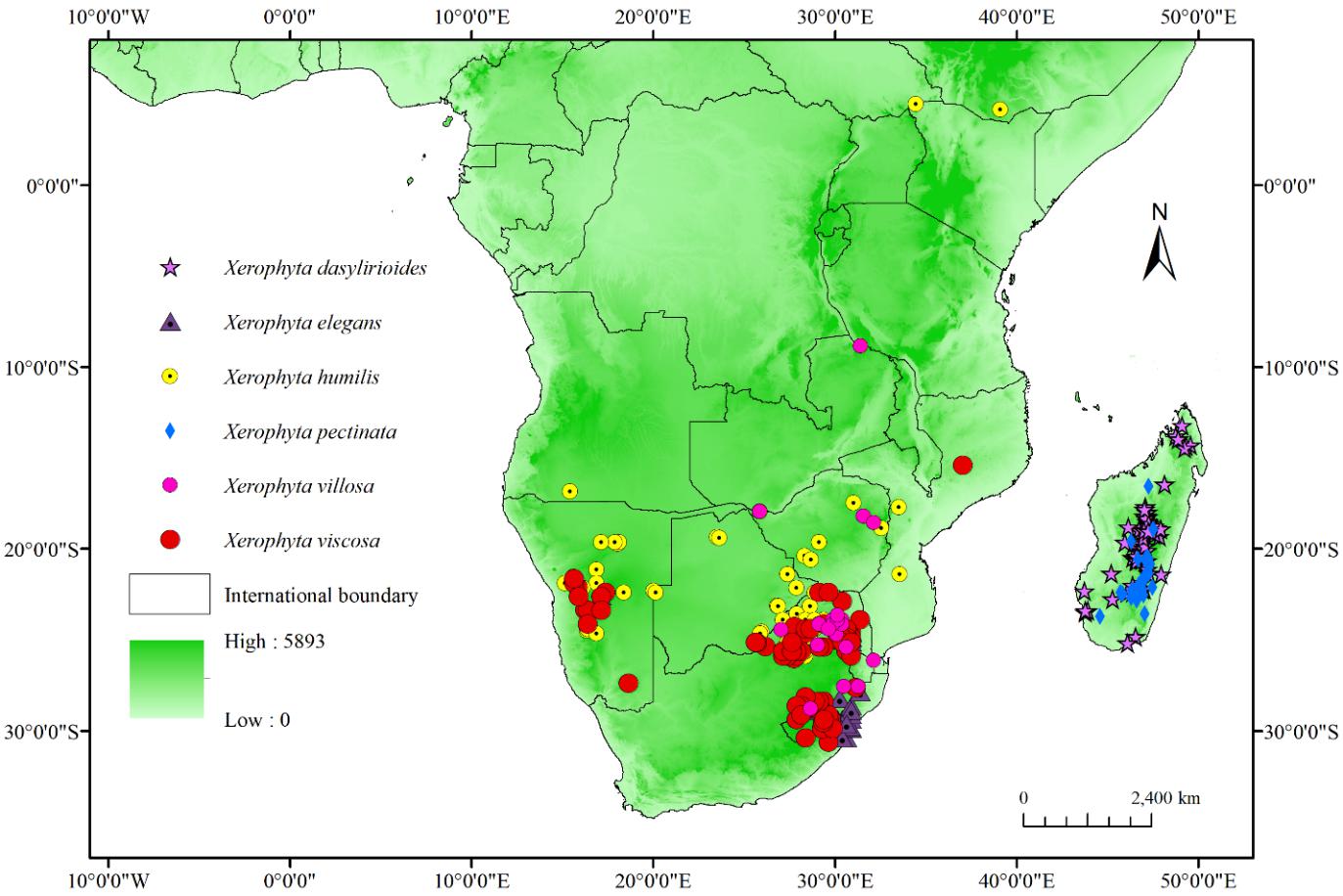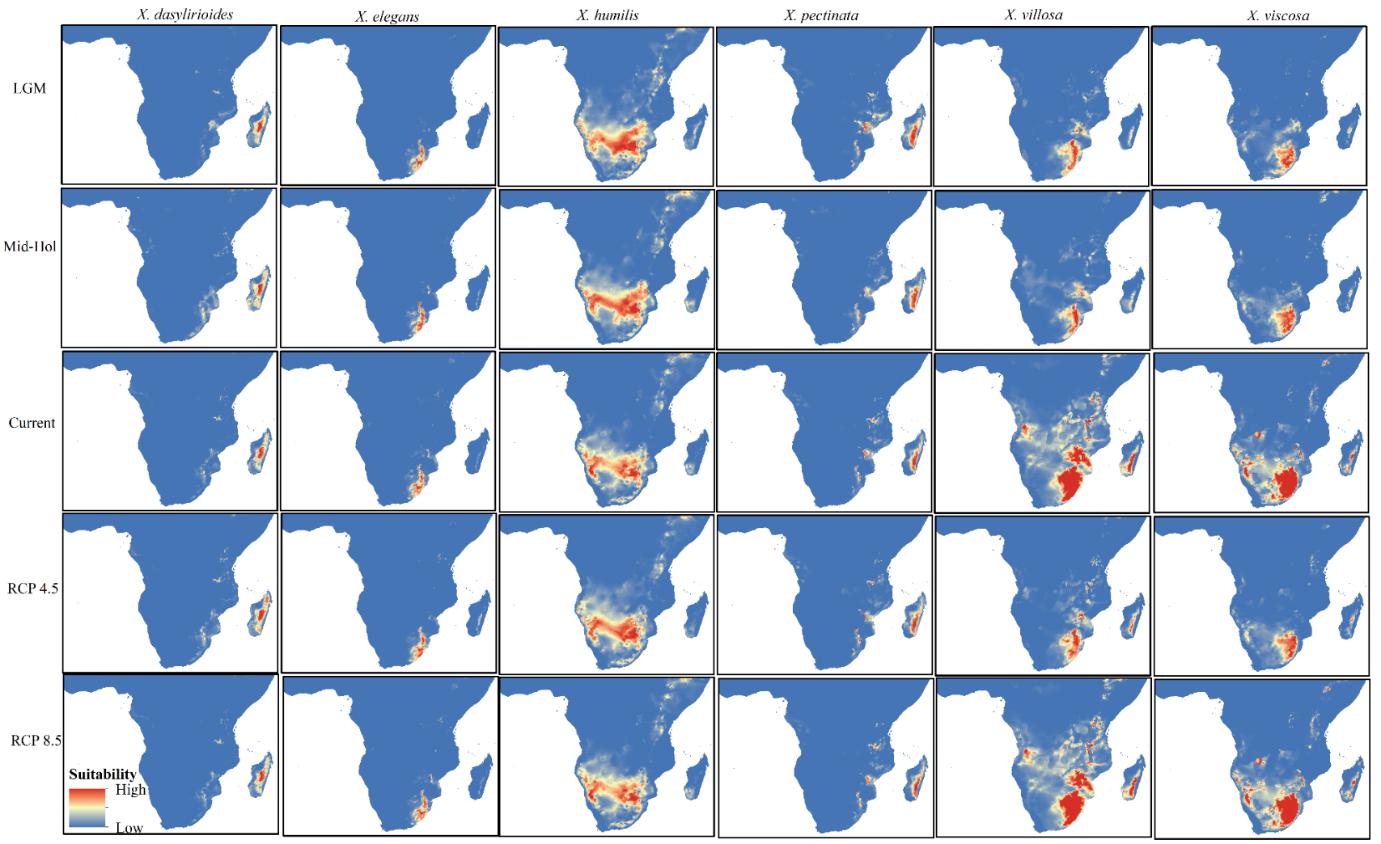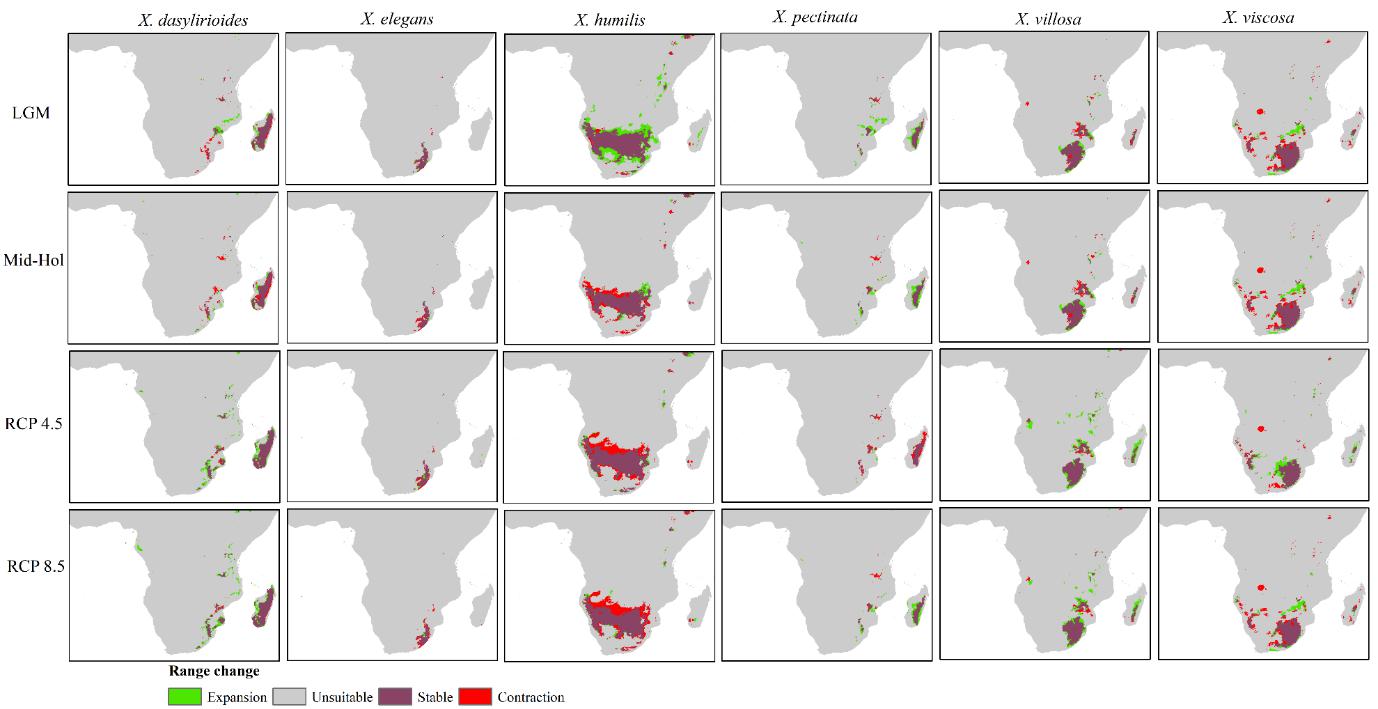Name:HU Guangwan
Tell:
Email:guangwanhu@wbgcas.cn
Organization:Wuhan Botanical Garden
Research Projects Habitats of Xerophyta Species in Africa under Climate Change
2024-05-28
Climate change poses a serious long-term threat to biodiversity. The potential effects of climate change on biodiversity have received considerable attention. It is projected that with the continued increase in global average temperatures and precipitation, Africa remains extremely vulnerable to climate change. To effectively reduce biodiversity loss, conservationists need to have a thorough understanding of the preferred habitats of species and the variables that affect their distribution. Therefore, predicting the impact of climate change on species-appropriate habitats may help mitigate the potential threats to biodiversity distribution.
Xerophyta Juss., is a monocotyledonous genus of the Velloziaceae family that is found on the African mainland, Madagascar, and the Arabian Peninsula. All African species are desiccation tolerant, i.e., resurrection plants. Most of the Xerophyta spp., except Xerophyta elegans, are poikilochlorophyllous, i.e., they lose their chlorophyll during desiccation, having protective mechanisms that are fully activated in the leaves.
Researchers of the Flora and Plant Taxonomy in Eastern Africa Group at Wuhan Botanical Garden, Chinese Academy of Sciences (WBG, CAS) analyzed the potential distribution of six Xerophyta species in Africa under past, current and future climate change scenarios using 308 species occurrence data from the Global Biodiversity Information Facility (GBIF, http://www.gbif.org/), environmental variables from the World Clim2.1 database (https://www.worldclim.org/data/worldclim21. html) and the MaxEnt model.
The results revealed that areas of moderate and high-suitability zones were found in the tropical Africa and corresponded to the recorded occurrence localities.
In terms of patterns of change in habitat suitability, the range change differed between past and two future scenarios depending on each species’ response. For most species, range loss was observed to be larger than range gain, irrespective of the scenario, however, RCP8.5 was observed to have the greatest loss. Nonetheless, with the changing climate, the suitable habitats of Xerophyta species may be compromised.
In addition, with the low records and poor sampling of Xerophyta species in Africa, aggressive species documentation and taxon sampling may be required to enhance the knowledge of the occurrence extent and area of occupancy for the genus.
The research titled “Projected impacts of climate change on the habitat ofXerophytaspecies in Africa” was published in Plant Diversity. Vincent Okelo Wanga is the first author and Professor HU Guangwan is the corresponding author.
This work was supported by grants from the International Partnership Program of CAS, the Sino-Africa Joint Research Centre of CAS, the ANSO Scholarship for Young Talents, and the PhD Fellowship Program of University of Chinese Academy of Sciences.

Localities and occurrences records of Xerophyta species employed in the modelling (Image by WBG) 
Xerophyta spp. Prediction maps for; Last Glacial Maximum, Mid-Holocene, Current climatic conditions, Future, RCP 4.5 and Future, RCP 8.5 (Image by WBG)

Representation of the past and future distribution maps of Xerophyta species range change for: Last Glacial Maximum, 20 000 BP, Mid-Holocene, 6 000 BP, RCP 4.5 and, RCP 8.5 (Image by WBG)

The multivariate environmental similarity surface (MESS) map by data source (Xerophyta spp. localities) and considering the environmental variables as reference environmental area for the African region for the past (LGM and Mid Holocene) and future distribution (RCPs 4.5 and 85) (Image by WBG)